
HARVARD REFERENCING FOR POSTGRADUATE STUDENTS
The link between what you write, and the evidence on which it is based, is provided by referencing
Each, and every, time you use somebody else’s work or ideas in your own work, you are expected to reference. There are no exceptions.
This includes all information on the internet.
Your Department may issue you with guidelines on how they want you to reference within your chosen area of study. If they do then follow
these guidelines carefully.
You should always aim to reference reliable sources. If a written or online source does not have a list of references, then think carefully before
using it in your work.
Remember we live in an age of “fake news”, so try to locate academic sources that substantiate the original material.
Always reference the version of the information source that you have actually used. When searching online be aware that the PDF’s you find
may not be the information source. The PDF may be the means of delivering information to you online.
You must find out if you are looking at a book chapter, journal article or report then cite appropriately and accordingly (Pears and Shields, 2019).
Secondary Referencing:
In secondary referencing you are referring to a source that is quoted or mentioned in the work you are reading. Use the words quoted or cited
depending on whether the author of the secondary source is taking a direct quote or paraphrasing from the primary source.
(I) Jones (2010, quoted in Gunnigle, 2015, p.28) states that …
(ii) Taylor (2015, cited in Moriartey, 2019) explains that ...
In this example Jones and Taylor are the primary source and it is important that wherever possible you cite and reference the primary source of
your information. You should try and read the primary work by Jones and Taylor. If you cannot, then you cannot include it in your reference list.
You can then only cite it in your text, by using the examples above (I) and (ii). You then include Gunnigle and Moriartey in your reference list.
Only include Jones and Taylor in your reference list if you have read them. (Pears and Shields, 2019).
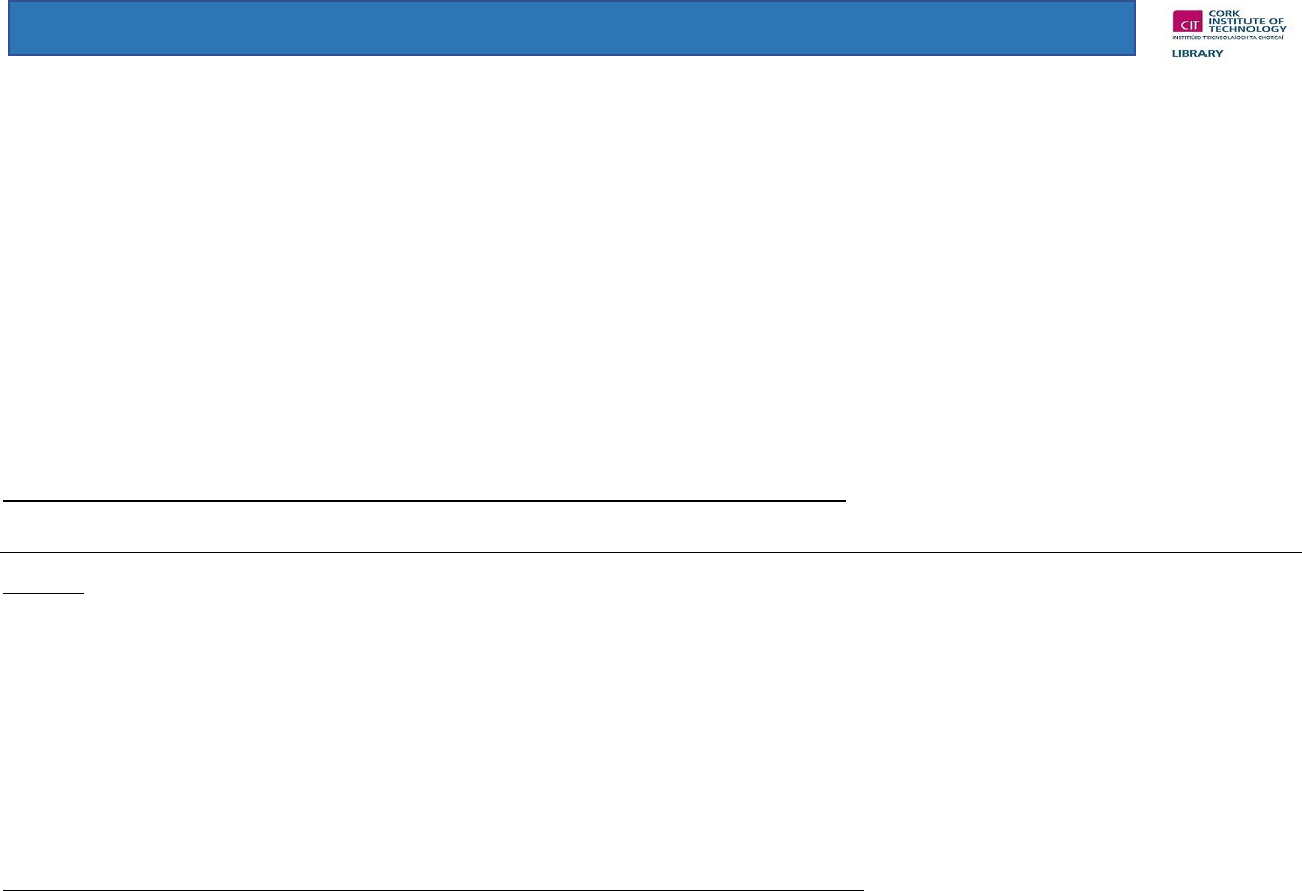
HARVARD REFERENCING FOR POSTGRADUATE STUDENTS
Common Knowledge
Common knowledge is defined as facts, dates, events, and information expected to be known by somebody studying or working in a particular
field, or area, of study.
Typically, there is no need to reference common knowledge eg. Dublin is the capital city of Ireland.
However, if you are a student only just beginning your study in a certain area and are unaware of what is known as common knowledge then
you need to ask yourself 2 questions:
1. “Before I started my course, did I know this information?”
2. “Did this idea or information come from my own head?”.
If you answer NO to one, or both, of these questions, then the information is not common knowledge and you should cite and reference the
sources.
If you are in doubt if something is common knowledge or not then always cite and reference it (Pears, and Shields, 2019).
Citations
When you refer to somebody else’s work or ideas in the text of your thesis, this is known as citing or is called ‘in-text citing’.
Citations are included in your final word count.
These in-text citations give the details of the work that you are quoting or paraphrasing from.
These citations then link to the full reference in the reference/bibliography list at the end of your thesis (Pears and Shields, 2019).
Your supervisor may instruct you on their preferred format for incorporating citations into your text. But all your citations should include the
following layout:
Author(s)/Editor(s) Surname, Initial (if required). (year of publication, page numbers if required). Use p. or pp. for page number(s).
When citing a corporate author cite the name, or initials if well known. For bodies with long names you should write out the full name and the
abbreviation the first time you use it. This makes it clear what the initials stand for.
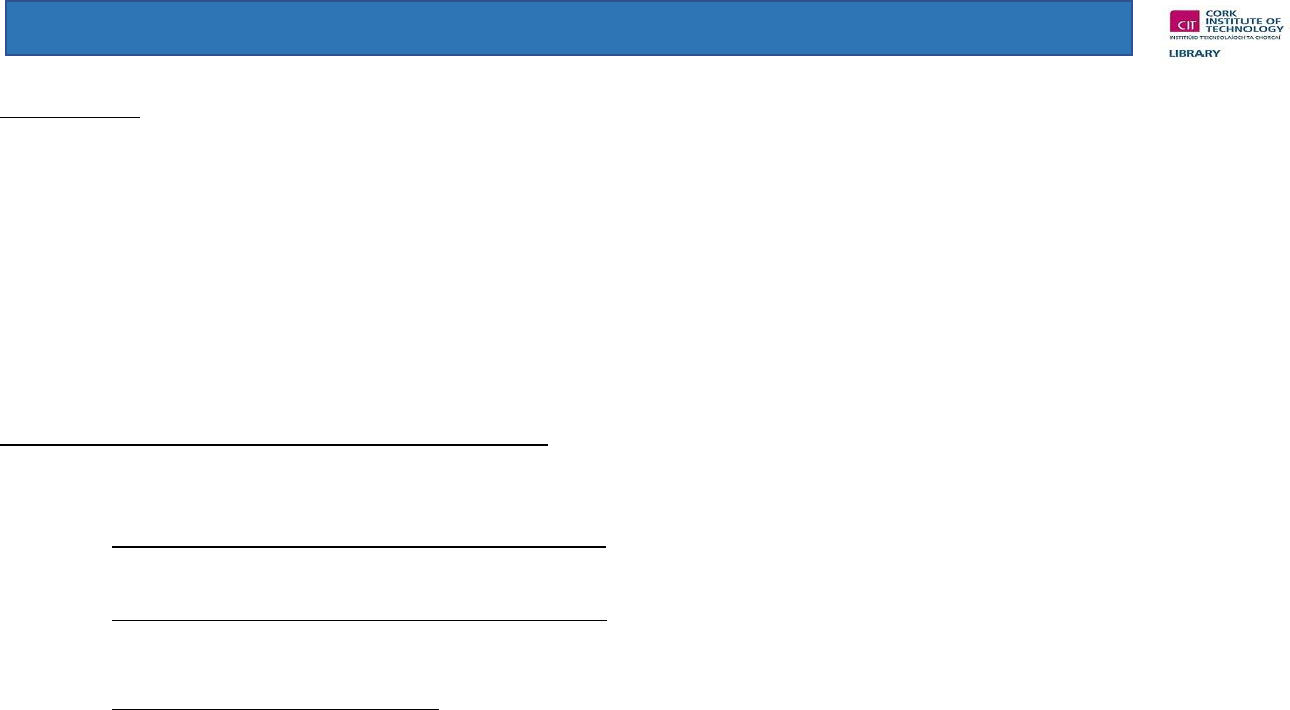
HARVARD REFERENCING FOR POSTGRADUATE STUDENTS
Citations (ctd.):
Be consistent in using the abbreviation after the first time to ensure that all your references appear correctly in your reference list.
In the Reference list do not use the Abbreviation instead give the name of the organisation in full.
• For two and three authors all surnames are listed. Only use ‘and’ once in each case and separate the names with a comma where it
applies. Eg. (Armstrong and Grady, 2012) (Tiernan, Morley, and Foley, 2006)
• When citing four or more authors you can cite the first name listed followed by et al. Check with your lecturer to make sure that all
authors are not required. Eg. (Millham et al. 1986)
• If there is no author use the Title in italics. (Economic wellbeing of Ireland, 2009)
When referring to two or more publications at the same time, these can be separated by semicolons and cited with the earliest date first. If
works are published in the same year, then they should be listed alphabetically by author. Eg. (Millham et al. 1986; Fitzpatrick, 2002; Crowley,
2005; Armstrong and Grady, 2012)
When citing sources published by the same author in the same year use lower case letters in alphabetical order after the publication date. Eg.
(Crowley, 2005a) stated that … (Crowley, 2005b) agreed that …
When citing different editions of the same work by the same author separate the dates of publication with a semicolon, the earliest date first.
Eg. (Fitzpatrick, 2002; 2010)
When citing multiple sources by the same author put the sources in order with the earliest date first in your intext citations and reference list.
Separate the dates in your citation with a semicolon. Eg. Data collected by one author (Crowley, 2005; 2007; 2011) …
For the same lead author single author works precedes works with multiple authors. The reference list entry, order for the same lead author is
determined alphabetically according to the second authors surname and so on if there are further authors.
Eg. Fitzpatrick, B. (2002) …
Fitzpatrick, B. (2010) …
Fitzpatrick, B. and Doyle, H. (2013) …
Fitzpatrick, B. and MacDonald, R. (2016) …
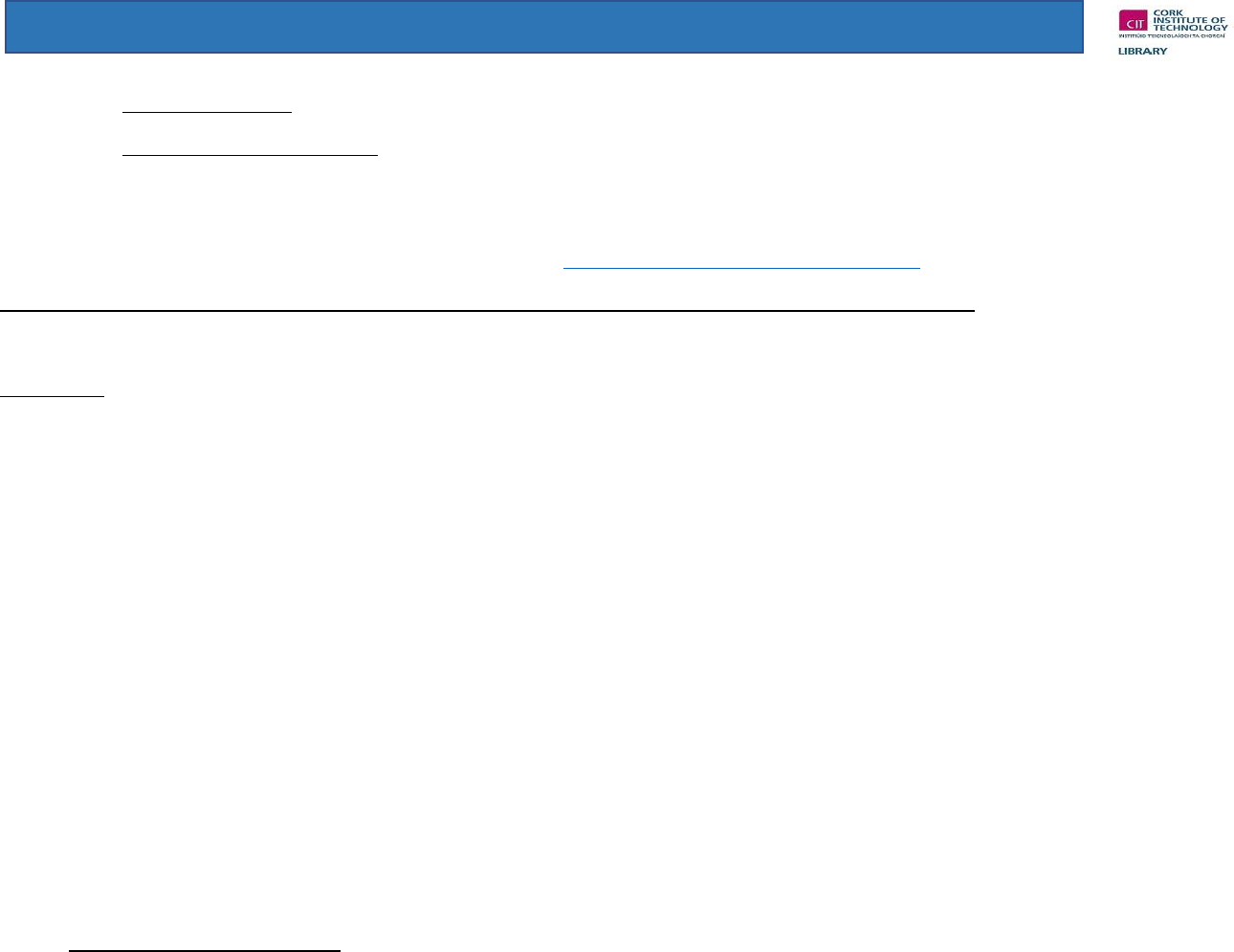
HARVARD REFERENCING FOR POSTGRADUATE STUDENTS
When citing a source with no date use the phrase “no date”. Eg. (Farrell, no date)
When citing a source with no author or date use the title and “no date”. Eg. (The Health of the European Union, no date)
When citing a webpage, you should use author and date where possible. Use title and date if there is no author or use URL or DOI if either
author or title cannot be identified (Pears and Shields, 2019). Eg. (http://www.householdbudgetsurvey.com, 2014)
Note that if author and/or title and/or date can’t be identified, then it may not be suitable for academic purposes.
Quotations:
Quotations should be relevant and should demonstrate your understanding of the material you have read.
Quotations are counted as part of your final word count.
Quotations of up to two or three lines should be enclosed in quotation marks, single or double – either format is acceptable, but be consistent
throughout! (Pears and Shields, 2019).
(Author, Date, page number) or URL
When taking quotations from material without page numbers, for example from webpages, then use the information you have access to, to help
the reader to find the quotation. A paragraph number would be useful - you can count down the number of paragraphs to the quote (Pears and
Shields, 2019).
Long quotations should have their own separate paragraph and should be indented from the main text. Note quotation marks are not necessary.
• Always quote in the language which appears in the source that you are reading (Pears and Shields, 2019).
• If you omit part of the quotation, indicate this by using three dots … this is called an ellipsis.
• If you insert your own or different words into a quotation, then put them in square brackets [].
• When pointing out an error in the quotation use the word sic in square brackets next to the error [sic]
In quotations, put the words you want to emphasise in italics and state that you have added emphasis (Pears and Shields, 2019):
(Author, Date, p., my emphasis)

HARVARD REFERENCING FOR POSTGRADUATE STUDENTS
If the original text uses italics, then state this.
(Author, Date, p., original emphasis)
If you are paraphrasing ideas from a specific page, or pages, then you should include page numbers in your citation.
Usually when citing, the authors family name is placed first in the citation followed by initials. However, you may be required to follow a
preferred naming convention.
Ask for guidance from your supervisor or copy the authors’ expression of their names (Pears and Shields, 2019).
Reference list/Bibliography List
If a publication has an editor(s) then use the abbreviation (ed.) or (eds) in the reference list.
Only use the edition number if it is not the first edition. Use the abbreviation edn eg. 4th edn, 2
nd
rev. edn if the edition is a revised edition.
After the URL include an access date (Accessed: 02 April 2020) unless there is a (doi) in which case there is no need for an access date. In the
reference list doi: is in lower case (Pears and Shields, 2019).
Book with four or more Authors
Author/editor(s) (Year of Publication) Title [in italics]. Place of Publication: Publisher Series and volume Number (Where relevant).
Millham, S.et al. (1986) Lost in Care: the problem of maintaining links between children in care and their families. Aldershot: Gower.
Or if your Supervisor/Institution demands referencing of all names
Millham, S., Bullock, R., Hosie, K. and Haak, M. (1986) Lost in Care: the problem of maintaining links between children in care and their
families. Aldershot: Gower.
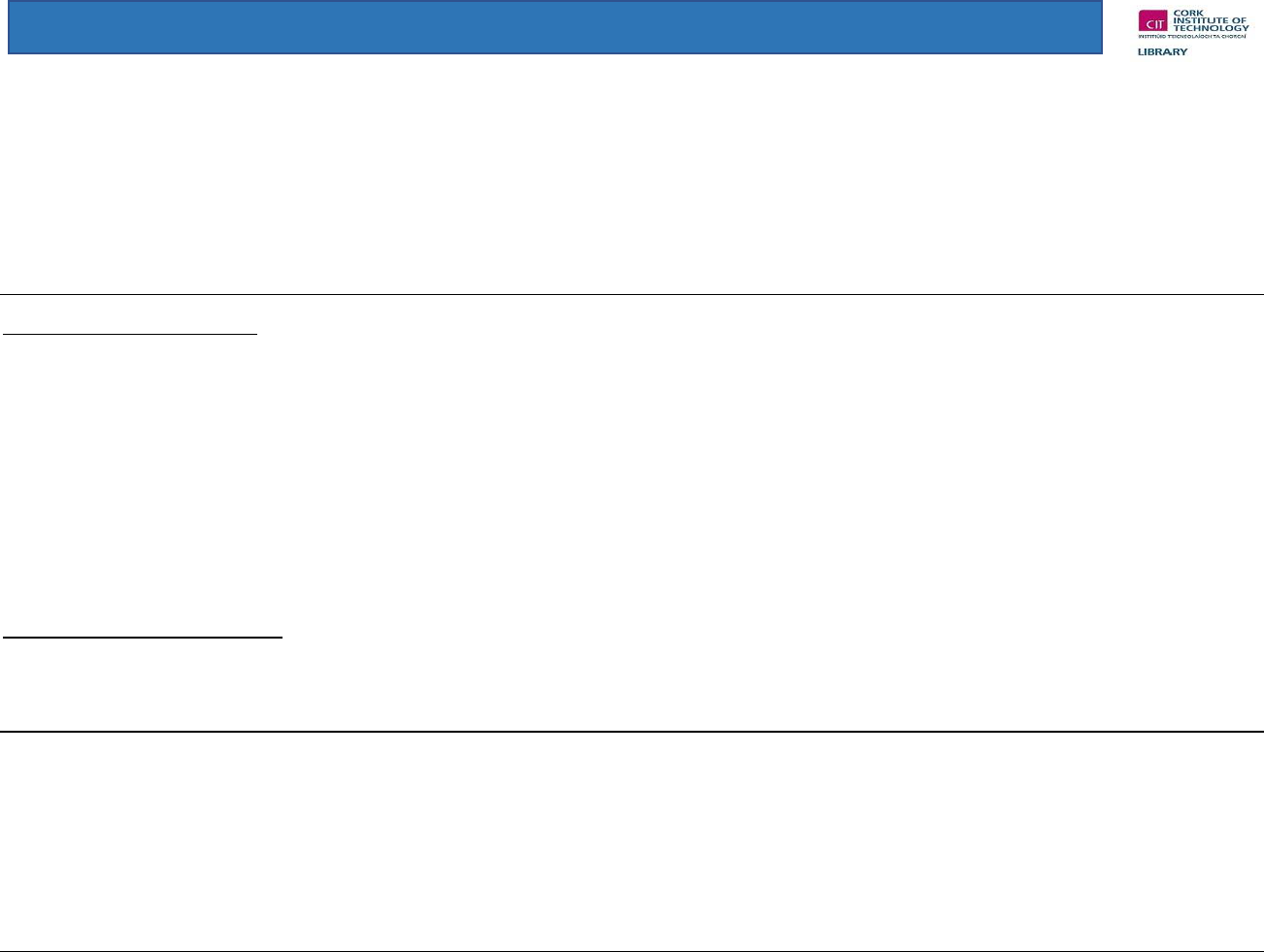
HARVARD REFERENCING FOR POSTGRADUATE STUDENTS
Edited Book
Editor(s) (Year of Publication) Title [in italics]. Place of Publication: Publisher Series and Volume number (Where relevant).
Parsloe, P. (ed.) (1999) Risk assessment in social care and social work. London: Jessica Kingsley Publishers.
Lalor, K. and Share, P. (eds.) (2013) Applied social care: an introduction for students in Ireland. 3
rd
edn. Dublin: Gill & MacMillan.
Book with Author and editor
Clough, R. (2000) The practice of residential work. (Edition if not first). Edited by Jo Campling. Houndmills: Macmillan Press.
Newspaper Articles
Author/byline (Year of Publication) ’Title of Article’. Title of newspaper [in italics]. (Edition if required). Day Month. Page numbers (if available).
If accessed online Available at: URL (Accessed: Date) or doi:
O’ Brien, D. (2020) ‘Government faces tough decisions in road to economic recovery’. Sunday Independent. 12 April. p. 11.
Where no Author/Byline is given
Title of newspaper [in italics] (Year of Publication) ‘Title of article’. Day Month. Page number.
Theses
Author (Year of submission) Title of thesis [in italics]. Degree statement. Institution.
If accessed online Available at: URL (Accessed: Date) or doi:
Hobbs, J. (2010) A framework for analysis of spatial specialisations of industry. PHD thesis. Cork Institute of Technology.

HARVARD REFERENCING FOR POSTGRADUATE STUDENTS
Protocols, regulations, and guidelines
Author (Year of publication) Title [in italics]. Series or publication number (if available) Place of publication: Publisher.
If accessed online Available at: URL (Accessed: Date) or doi:
Health Service Executive (2020) National guidelines on accessible health and social care services. Available at:
https://www.hse.ie/eng/services/yourhealthservice/access/ (Accessed: 15 April 2020).
Company Reports
Author or Organisation (Year of publication) Title of report [in italics]. Place of publication: Publisher.
If accessed online Available at: URL (Accessed: Date) or doi:
Irish Dairy Board (2016) Annual report of the Irish Dairy Board 2016. Dublin; Irish Dairy Board.
CD-ROMs or DVD’s
Title of publication [in italics] (Year of publication) [CD-ROM} or [DVD]. Producer (where available) Available; Publisher/distributor.
The interactive skeleton on CD-ROM (1995) [CD-ROM]. Available: Mosby.
European Union EU legal sources
Legislation title [in italics] (Year) Official Journal [in italics] Series initial issue, Page numbers.
If accessed online Available at: URL (Accessed: Date) or doi:
The Treaty of Nice (2001) Official Journal C 80, 10 March, pp.1-87.

HARVARD REFERENCING FOR POSTGRADUATE STUDENTS
EU directives, decisions, and regulations
Legislation type (in single quotation marks) Number and title (in single quotation marks) (Year) Official Journal (OJ) series [in italics], Issue, Page
numbers.
If accessed online Available at: URL (Accessed: Date) or doi:
‘Council directive 2011/83/EU on Consumer rights’ (2011) Official Journal L 304, 22 November, pp. 64-88.
Government Publications
Government Department (Year of publication) Title [in italics] Place of Publication: Publisher (Series)
If accessed online Available at: URL (Accessed: Date) or doi:
Department of Health (2020) Dialogue forum with voluntary organisations. Available at: https://www.gov.ie/en/publication/fda1d7-
dialogue-forum-with-voluntary-organisations/ (Accessed: 16 April 2020).
Publications of International Organisations
Organisation or Institution (Year of Publication) Title [in italics] Place of Publication: Publisher.
If accessed online Available at: URL (Accessed: Date) or doi:
Publications Office of the EU (2020) Supporting teacher and school leaver careers. Available at: https://op.europa.eu/en/publication-
detail/-/publication/f02d4648-7a07-11ea-b75f-01aa75ed71a1/language-
en?WT.mc_id=Searchresult&WT.ria_c=41957&WT.ria_f=5702&WT.ria_ev=search (Accessed:16 April 2020).
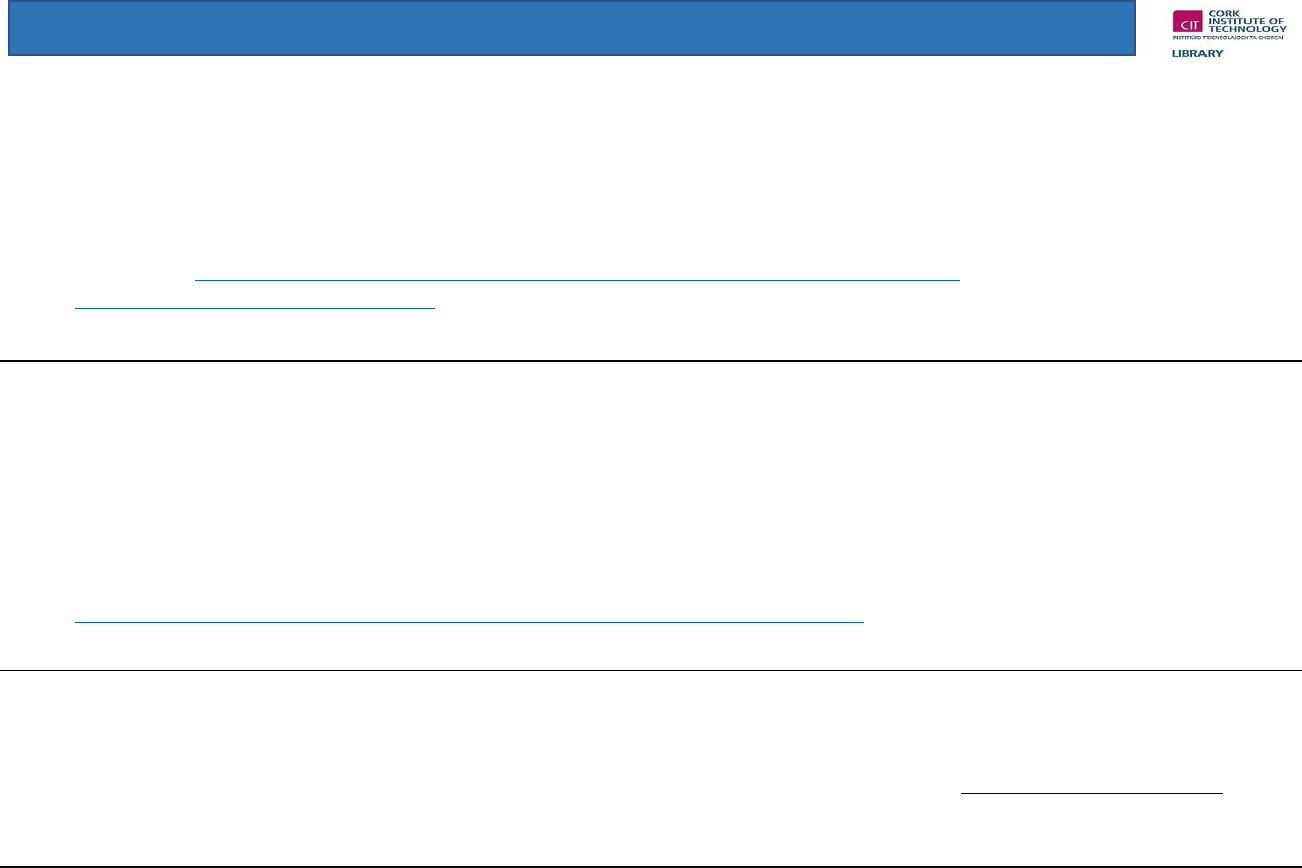
HARVARD REFERENCING FOR POSTGRADUATE STUDENTS
Technical Standards
Name of Authorising Organisation (Year) Number and Title of Standard [in italics] Place of Publication: Publisher.
If accessed online Available at: URL (Accessed: Date) or doi:
British Standards Institution (2008) BS8498:2008: British Standards for screw threads and screw gauges – introduction and guidance.
Available at: https://eu-i2-saiglobal-com.cit.idm.oclc.org/management/display/index/31/675367/-
/e656343bb10eae12419b5a9f88bab16a (Accessed: 16 April 2020).
Patents
Inventor(s) (Year of Publication) Title [in italics]. Authorising Organisation Patent number. Available at: URL (Accessed: Date).
Friedhelm A, Durckheimer W, Fischer G, Burkhard M, Seibert G, Isert D and Klesel N. (1990) Cephalosporin derivatives
and processes for their preparation. Intellectual Property Office Ireland Patent no. 81225. Available at:
https://eregister.patentsoffice.ie/register/PTRegister.aspx?idappli=1990/1139 (Accessed:16 April 2020).
Lectures Notes in VLE
Lecturer. (Year) ‘Title of item’. Module code: Module title [in italics]. Available at: URL (Accessed: date).
O Donovan, F. (2018) ‘Referencing’. LIB 6077: Information literacy skills. Availablw at: https://www.cit.ie/canvas
(Accessed: 23 October 2018).

HARVARD REFERENCING FOR POSTGRADUATE STUDENTS
Twitter
Author. (Year) text of tweet (use ellipsis if very long) [Twitter] Day/month. of tweet posted Available at: URL (Accesed: date).
CIT Libraries [@CITLibrary] (2020) Cork Institute of Technology Libraries providing academic support to CIT staff …
[Twitter] 31 March. Available at: https://twitter.com/CITLibrary (Accessed: 27 May 2020).
Bibliography
Pears, R. and Shields, G. (2019) Cite them right: the essential referencing guide. 11
th
Edn. England: Red Globe Press.
